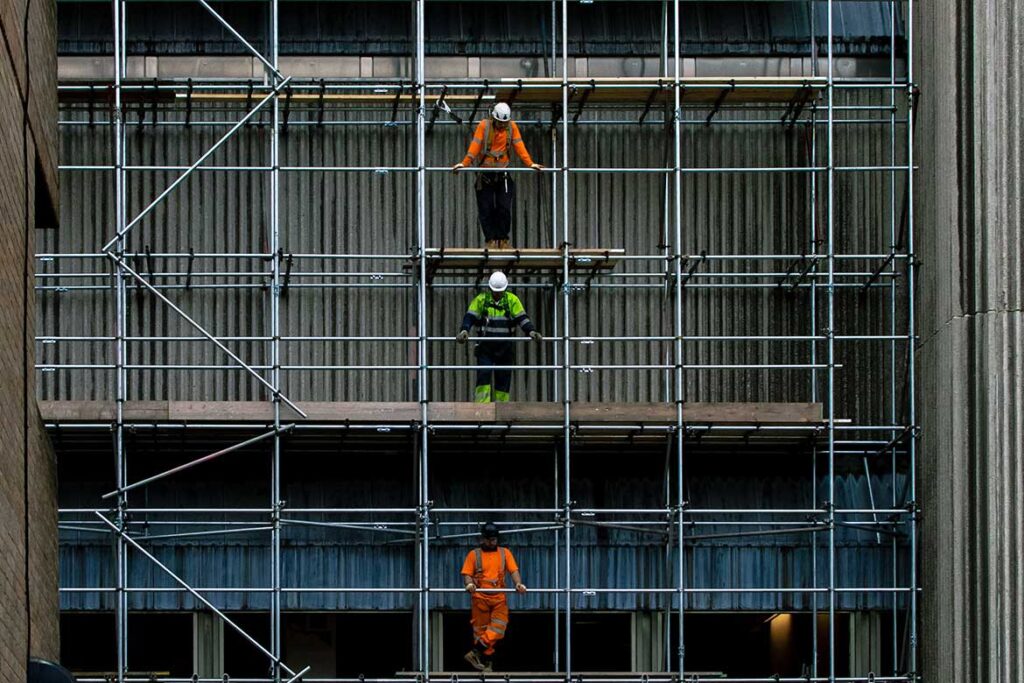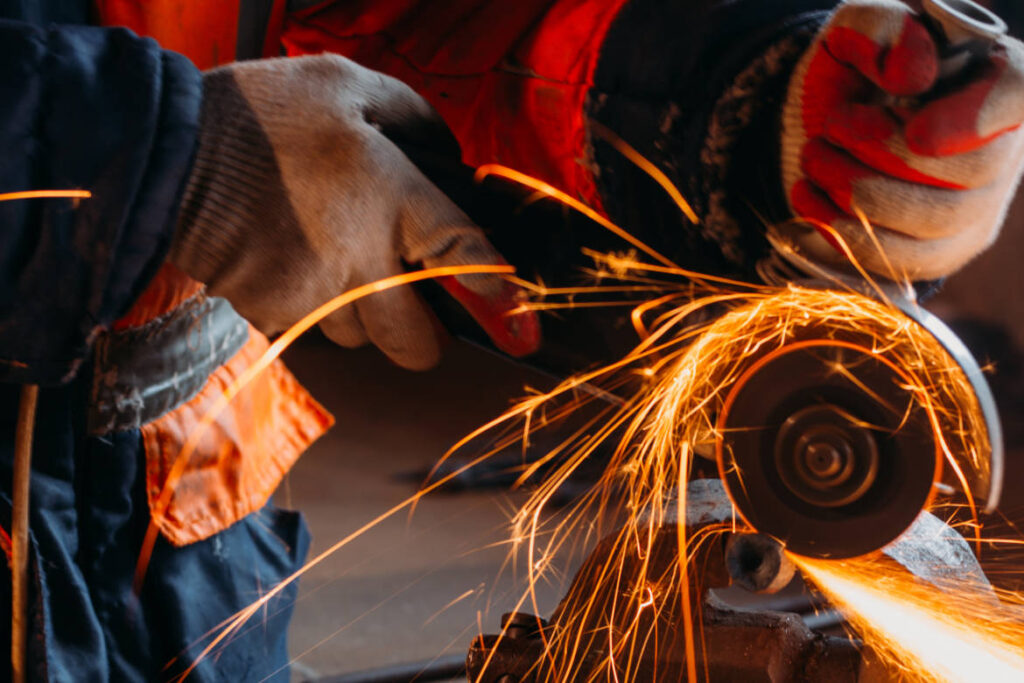In the fast-paced environment of construction sites, ensuring safety is paramount. Among various safety solutions, safety strip products play a vital role. Their function extends beyond mere visibility; they are designed to prevent accidents and maintain a safe working environment. This article explores the significance of safety strip products in construction and how they contribute to overall site safety.
Understanding the role of safety strip products in construction
Safety strip products are integral to construction site management, serving multiple purposes that enhance safety protocols. They are often made from high-visibility materials and are applied to various surfaces to delineate hazardous areas, pathways, and equipment. Their primary aim is to alert workers and visitors to potential dangers, thereby minimising risks.
The purpose of safety strip products
The main purpose of safety strip products is to improve visibility in potentially dangerous areas. By marking out boundaries and hazards clearly, they provide essential information to workers and help in avoiding accidents. These products are extensively used for marking edges of steps, slopes, and any areas where there may be sudden changes in elevation.
Additionally, safety strips can indicate the location of emergency exits, equipment storage areas, and no-go zones. This helps in maintaining an organised site where workers can navigate safely without confusion. The bright colours and reflective materials used in these products draw attention, thus serving as effective warning signals.

Different types of safety strip products and their uses
There are several types of safety strip products available, each tailored for specific uses within a construction context. These include:
- Glow-in-the-dark tape: Ideal for low-light conditions, this product ensures that pathways and hazards remain visible even when natural light diminishes.
- Anti-slip tapes: These strips are essential in areas where water, oil, or other slippery substances may be present, helping prevent slips and falls.
- Reflective tapes: Used extensively for night work, these strips enhance visibility by reflecting light, thus alerting personnel to dangers even in low-light situations.
- Warning signs: Often combined with safety strips, these signs provide detailed information about specific hazards, thereby reinforcing the visual warning given by the strips.
By incorporating various types of safety strips, construction sites can significantly enhance their safety measures and ensure a more secure working environment.
Moreover, the implementation of safety strip products is not merely a regulatory requirement; it also fosters a culture of safety among workers. When employees observe a commitment to safety through visible measures, they are more likely to adopt safe practices themselves. This proactive approach to safety can lead to a reduction in workplace accidents, which not only protects the workforce but also minimises downtime and associated costs for the project. Furthermore, regular training sessions that emphasise the importance of these products can reinforce their usage, ensuring that all personnel are aware of their significance and functionality. Find more about reduction on https://algs4.cs.princeton.edu/65reductions/
In addition to their practical applications, safety strip products can also contribute to the overall aesthetic of a construction site. When used thoughtfully, these strips can create a visually appealing environment that communicates professionalism and care. This is particularly important in projects where public interaction is likely, such as urban developments or renovations in populated areas. By maintaining a tidy and well-marked site, construction companies can enhance their reputation while prioritising safety, ultimately leading to greater trust from clients and the community alike.
The impact of safety strip products on construction site safety
Implementing safety strip products on construction sites significantly reduces accidents and fosters a culture of safety among workers. Their presence not only warns about risks but also encourages vigilance, leading to better adherence to safety protocols.
Reducing accidents with safety strip products
Statistics indicate that a significant number of workplace accidents occur due to slips, trips, and falls. Safety strip products directly address this issue by delineating dangerous areas clearly. By highlighting potential hazards, these products can reduce the likelihood of accidents and protect workers from injury.
Moreover, when safety strip products are used consistently and maintained, they reinforce the behavioural change among crew members. They serve as constant reminders to be cautious and aware of their surroundings, thereby embedding a culture of safety on site.
Enhancing visibility and awareness on site
The visibility offered by safety strip products is one of their primary benefits. In complex construction sites, where numerous activities occur simultaneously, it’s crucial for workers to be aware of their environment at all times. Safety strips enhance this visibility by providing clear demarcation of safe and hazardous areas.
In addition to enhancing physical awareness, these products can also improve communication among workers. When everyone is aware of the defined zones and hazards, it encourages discussions about safety, thus fostering a collaborative approach to workplace safety. To learn more about hazards click here.
Furthermore, the use of bright colours and reflective materials in safety strip products can significantly increase their effectiveness, especially in low-light conditions or during adverse weather. This heightened visibility ensures that even in challenging environments, workers can quickly identify potential dangers, allowing them to make informed decisions about their movements. The psychological impact of such visibility cannot be understated; when workers feel secure in their understanding of the site layout, it can lead to increased confidence and productivity.
Additionally, the integration of safety strip products with other safety measures, such as signage and personal protective equipment, creates a comprehensive safety strategy. This multi-faceted approach not only addresses immediate hazards but also instils a broader understanding of safety protocols among the workforce. By reinforcing the importance of safety through various means, construction sites can cultivate an environment where safety is a shared responsibility, ultimately leading to a more cohesive and aware team.
Legal and industry standards for construction site safety
Construction sites are governed by stringent safety regulations designed to ensure the well-being of all personnel. Safety strip products not only contribute to compliance with these regulations but are also pivotal in promoting best practices within the industry.
Safety regulations in the construction industry
In the UK, the Health and Safety at Work Act and related guidelines set out clear responsibilities for employers and workers. Ensuring safety on-site involves a multifaceted approach, which includes proper signage, adequate training, and the use of safety equipment, including safety strip products. These regulations are designed to minimise risks and safeguard individuals from harm while at work.
Failure to adhere to these regulations can lead to serious consequences, including hefty fines and legal repercussions, highlighting the importance of incorporating proactive safety measures like safety strips.
How safety strip products help meet compliance
Utilising safety strip products helps construction companies demonstrate compliance with industry safety standards. By marking hazardous areas clearly and providing visual cues, these products align with the required safety protocols, making it easier for sites to pass inspections.
Furthermore, adopting safety strip products conveys to both employees and regulatory bodies a commitment to maintaining a safety-first culture. This proactive approach not only enhances safety but can also improve a company’s reputation in the industry.
Moreover, the implementation of safety strip products can significantly reduce the likelihood of accidents on-site. By clearly delineating walkways, hazardous zones, and equipment areas, these strips serve as constant reminders for workers to remain vigilant. The psychological impact of visual safety cues cannot be understated; they instil a sense of awareness and responsibility among personnel, encouraging them to adhere to safety protocols diligently.
In addition to their practical applications, safety strip products are often designed with durability in mind, ensuring they withstand the rigours of a construction environment. Many are made from high-visibility materials that can endure harsh weather conditions and heavy foot traffic, making them an invaluable asset for long-term safety management. This durability not only enhances their effectiveness but also signifies a cost-effective investment for construction firms aiming to uphold the highest safety standards while managing operational budgets efficiently.

The future of safety strip products in construction
As construction continues to evolve, so do safety technologies. Safety strip products are no exception, with innovations that enhance their functionality and effectiveness being developed regularly.
Innovations in safety strip product design
The design of safety strip products has advanced significantly over recent years. New materials and technologies have been employed to create strips that are not only more visible but also more durable. For instance, the introduction of smart materials enables safety strips to change colour or light up under certain conditions, further enhancing visibility.
Furthermore, there is a growing trend towards using eco-friendly materials in the production of safety strips. This not only contributes to environmental sustainability but also aligns with the increasing demand from consumers and businesses for greener practices. Manufacturers are now exploring biodegradable options and recycled materials, which not only reduce waste but also appeal to a market that is increasingly conscious of its environmental footprint.
In addition to material advancements, the ergonomic design of safety strips is also being prioritised. Strips are being crafted to ensure they can be easily applied and removed without damaging surfaces, which is particularly important in temporary installations. This ease of use is vital for construction sites that require frequent changes in layout or design, allowing for a more fluid working environment.
The role of technology in construction site safety
Technology is transforming the construction industry, and safety is no exception. The integration of digital systems with safety strip products is also becoming more common. For example, the development of apps that link with safety strip indicators can provide real-time updates on site conditions, ensuring that workers are always informed of any hazards.
Moreover, the use of augmented reality (AR) is beginning to play a role in enhancing safety measures on construction sites. By overlaying digital information onto the physical environment, workers can receive visual cues about potential hazards or the correct placement of safety strips. This innovative approach not only aids in immediate hazard recognition but also serves as a training tool for new employees, helping to instil a culture of safety from the outset.
Overall, as technology continues to evolve, safety strip products will likely become even more sophisticated, increasing their efficiency and effectiveness on construction sites. The potential for integration with other safety technologies, such as drones for aerial site monitoring, could further revolutionise how safety is managed in the construction industry.
In conclusion, the importance of safety strip products cannot be understated. They play a pivotal role in ensuring safety on construction sites, complying with legal standards, and adapting to the future. Their impact on reducing accidents and enhancing visibility is significant, making them an essential component of modern construction safety practices.
